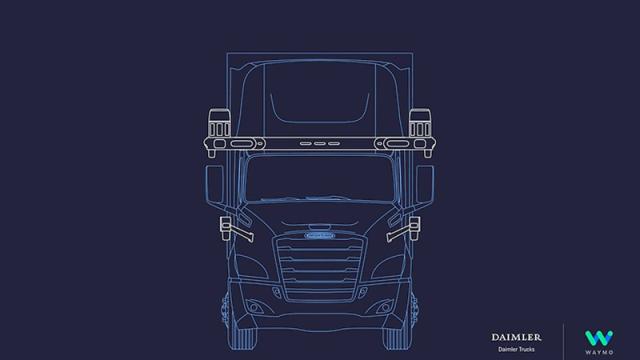With tens of thousands of Americans dying on our roads every year, it’s clear something has to give. Either we’re all going to stop driving, or we’re going to get robots to do it for us. The problem is that the business case for the latter is looking increasingly shaky.
[referenced id=”1077533″ url=”https://gizmodo.com.au/2017/11/what-if-autonomous-cars-just-never-happen/” thumb=”https://gizmodo.com.au/wp-content/uploads/2017/11/29/v7isst3kpnaql4btzkzs-300×196.jpg” title=”What If Autonomous Cars Just Never Happen?” excerpt=”More and more semi-autonomous cars cruise on the road every day, and yet the more time I spend testing these driver-assisted vehicles, the more I think that full autonomy may never, ever happen.”]
An article in the Financial Times details a new interest in autonomous trucking. Is it because Silicon Valley execs all watched Convoy lately? Over the Top? Are they all just super into trucks? No, it’s that they’ve realised making autonomous cars is hard. Listen to how happily these execs talk about simple, easy, autonomous trucks in the FT:
For a driverless ride-hailing service to exist, the car needs to take passengers anywhere in the city, including to rarely visited side streets. That would require continual mapping work to stay up to date, whereas 18-wheelers spend the bulk of their time on the same monotonous highways.
“It’s basically a straight road where you’re not really even shifting gears, much less having the opportunity to run into a building,” said Annie Kadavy, a partner at Redpoint Ventures, who previously led strategic operations at Uber Freight.
Most of the companies involved are trying to constrain the engineering problem as much as possible — a contrast to the approach taken by robotaxi groups, whose primary interest was in tackling the complexities of urban mobility.
The main model for these self-driving semis would be to have autonomous trucks go from hub-to-hub on straightaway highways while humans handle the tricky last-mile types of situations, as the FT explains:
Don Burnette, a former Uber software engineer who now leads Kodiak Robotics, a driverless trucking start-up, said trying to solve every conceivable edge case is what trapped the leading autonomous car companies into a “demo mindset” instead of developing viable commercial applications that could compete with Uber.
So instead, Kodiak aims to build “transfer hubs” near the highway in which a standard truck driver would carry freight a few miles to the hub, then swap the freight to an autonomous truck that would carry it, say, 483 km to the next hub, where another truck driver is waiting.
[…]
“If you want to get to market sooner, you need to really narrow your use case as much as you can,” Burnette said. “We are only focused on the on-ramp, highway, off-ramp portion of the long-haul interstate driving problem.”
Hearing a former Uber engineer talk about the ease of making a truck drive itself does cast into relief how difficult it is to make a taxi drive itself.
It also shows how hard it is to make money from autonomy. Much in the way that electric cars are doing a better job at raising stock prices than actual profit margins, driverless tech seems to have less of a business case than ever. Automakers themselves stopped hyping autonomous cars years ago.
The only players still in the field are talking about autonomous cars in terms of robotaxis. This is right at the heart of Uber’s operations. It’s just that Uber has never made any money from its business of offering rides. It makes money skirting regulations, exploiting workers and promising a bigger, better future to investors. Uber has spent years subsidizing every ride you take, while pulling in billions from wealth funds like SoftBank. It doesn’t even look like SoftBank wants to know where that is going, selling hundreds of millions in shares earlier this year even as the company is never more than a family dinner away from the White House.
Outside of Uber, the only other big players in autonomous cars left are backed by companies too big to care. If Waymo finds a business model for its parent Google, I think Google executives would be as surprised as anyone else. What am I saying? Waymo inked a deal with Daimler to produce Level 4 autonomous trucks this past October.
While it’s pretty easy to see that a trucking company might want to trade their human drivers for robot ones they can exploit infinitely — no need to sleep, no need to train — it’s hard to see autonomous cars making money anytime soon, if they can ever get on the road.
